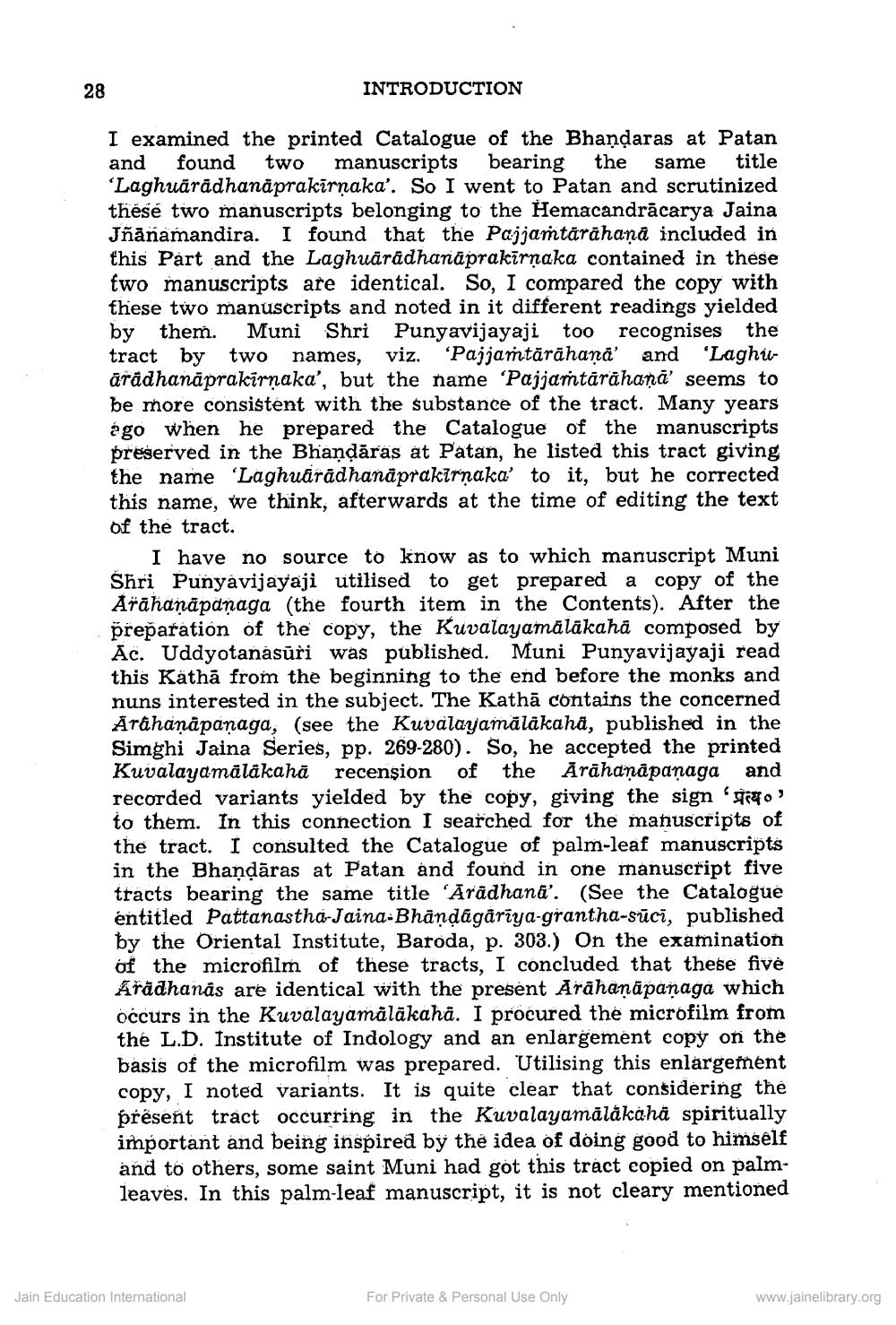________________
28
INTRODUCTION
I examined the printed Catalogue of the Bhandaras at Patan and found two manuscripts bearing the same title 'Laghuārādhanäprakīrņaka'. So I went to Patan and scrutinized these two manuscripts belonging to the Hemacandrācarya Jaina Jñanamandira. I found that the Pajjaħtärähand included in this Part and the Laghuārädharaprakīrņaka contained in these two manuscripts are identical. So, I compared the copy with these two manuscripts and noted in it different readings yielded by them. Muni Shri Punyavijayaji too recognises the tract by two names, viz. 'Pajjamtārāhana' and 'Laghuārādhanăprakirnaka', but the name 'Pajjaħtārāhana' seems to be more consistent with the substance of the tract. Many years é go when he prepared the Catalogue of the manuscripts preserved in the Bhandaras at Patan, he listed this tract giving the name 'Laghuaradhanaprakirnaka' to it, but he corrected this name, we think, afterwards at the time of editing the text of the tract.
I have no source to know as to which manuscript Muni Shri Punyavijayaji utilised to get prepared a copy of the Ařähaņāpañaga (the fourth item in the Contents). After the preparation of the copy, the Kuvalayamālākahä сomposed by Ac. Uddyotanasūri was published. Muni Punyavijayaji read this Kathā from the beginning to the end before the monks and nuns interested in the subject. The Kathā contains the concerned Ārahanäpanaga, (see the Kuvalayamáläkaha, published in the Simghi Jaina Series, pp. 269-280). So, he accepted the printed Kuvalayamālākahā recension of the Arāhanapanaga and recorded variants yielded by the copy, giving the sign o' to them. In this connection I searched for the manuscripts of the tract. I consulted the Catalogue of palm-leaf manuscripts in the Bhandāras at Patan and found in one manuscript five tracts bearing the same title 'Aradhana'. (See the Catalogue entitled Pattanastha-Jaina-Bhandägariya-grantha-sūci, published by the Oriental Institute, Baroda, p. 303.) On the examination of the microfilm of these tracts, I concluded that these five Aradhanas are identical with the present Arahanäpanaga which occurs in the Kuvalayamäläkaha. I procured the microfilm from the L.D. Institute of Indology and an enlargement copy on the basis of the microfilm was prepared. Utilising this enlargement copy, I noted variants. It is quite clear that considering the present tract occurring in the Kuvalayamälakahä spiritually important and being inspired by the idea of doing good to himself and to others, some saint Muni had got this tract copied on palmleaves. In this palm-leaf manuscript, it is not cleary mentioned
Jain Education International
For Private & Personal Use Only
www.jainelibrary.org




